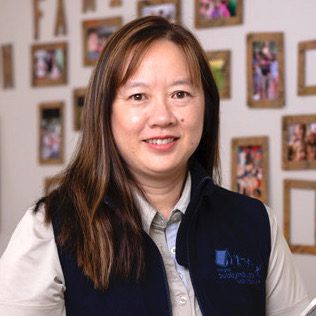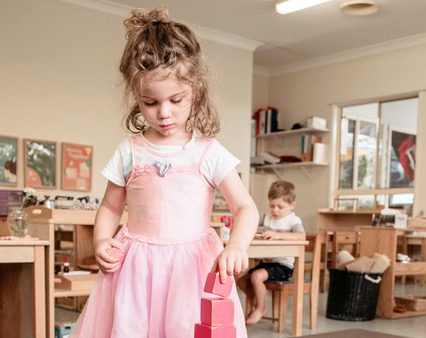The Challenge
The Gap Cubbyhouse Montessori needed a solution to monitor indoor air quality to lower the risks of airborne disease transmission, such as COVID 19 and increase productivity of students and staff.
The Solution
The child care centre selected IoT indoor air quality monitors, connected to remotely accessible web and mobile applications, that can indicate CO2, humidity and temperature levels, and trigger alerts when thresholds are passed.
The Benefits
The combined Thinxtra and Zeplin solution provided instant access to indoor air quality data, allowing staff to change conditions in the rooms when necessary. Students and staff feel fresher and more productive, learning and breathing in healthier, safer air.
The Gap Cubbyhouse Montessori is a family-owned long day care centre that caters to children between the ages of six weeks to six years specialising in the Early Years Learning Framework and Montessori educational systems. With extensive background in engineering and scientific methodology, Sue-Ling Lau, Director of The Gap Cubbyhouse Montessori, understood the importance of maintaining healthy indoor air quality (IAQ) for children, their families, and staff.
Once the centre reopened after pandemic lockdowns, Sue recognised the need for an IAQ monitoring solution to reduce the risk of transmission of airborne diseases like COVID-19, and boost the overall health and wellbeing of the Montessori community at The Gap.

“All childcare centres face the same threat of virus transmission, and by knowing the CO2 levels in a room you can not only make informed decisions to minimise COVID-19 transmission but all airborne diseases. It wasn’t enough to just open the windows and get air purifiers, whilst they are crucial we still need to understand the baseline of air quality in all parts of the centre.”
Sue-Ling Lau,
Director at The Gap Cubbyhouse
Implementing an IAQ Monitoring Solution
Sue partnered with Brisbane-based Zeplin to implement its IAQ Monitoring Solution, comprising IoT sensors that measure CO2, temperature, and humidity levels. The devices are battery-powered, with a lifespan of up to five years and no ongoing maintenance requirements. The data recorded by the sensors is transmitted in real time over Thinxtra’s national, public 0G Network, and available to view in Zeplin’s remotely accessible, cloud-based application.
The Gap Cubbyhouse Montessori installed IAQ monitoring devices across the venue’s classrooms, offices, and corridors, each with sensors that provide reliable data through Zeplin’s mobile and web applications. The solution was fully functional within hours, and did not require any dedicated cabling to be implemented.

“Sue and I discussed setting thresholds based on recommended standards, giving The Gap Cubbyhouse a solution that triggers alerts based on their preferred attributes which can be adjusted any time. Alongside opening windows, using air purifiers, and turning air conditioners to fresh air intake, CO2 monitors are a must-have in day care centres and schools.”
Justin Appi,
Director at Zeplin
Real-time data on CO2 levels in rooms
The centre receives alerts when maximum threshold limits for IAQ are reached, allowing Sue to advise employees working on-site to change the conditions in each respective room.
“Since I don’t always work on-site, I wanted a way to see the CO2 levels remotely, and that’s where the Zeplin and Thinxtra system came in. It proved a very attractive option as it created visibility into air quality across all indoor spaces, with the ability to access data at any time, plus the benefit of live notifications.
Having real-time data on CO2 levels, humidity, and temperature available helps us take the right measures to maintain the health and wellbeing of the children and staff. It lets us know when to open windows, move outside, and even ensure children are hydrated and dressed appropriately in hotter months. Poor ventilation also has an impact on cognitive ability and therefore productivity, so lowering CO2 levels means no one feels tired or groggy, giving us a more optimal learning environment for children.

It has been quite eye-opening to see the CO2 threshold alerts come through. We did not realise how high CO2 levels could get even in a low-density suburb like The Gap.
Initially, we were getting alerts several times per day but with the new procedures in place to increase airflow we are now getting less. Our trigger point is 800 parts per million (ppm) – which is an acceptable level of CO2. Complaints of drowsiness and poor air quality start once CO2 exceeds 1000 ppm. These levels were surprisingly common at our centre when we first installed the monitors. Parents have told me they feel very reassured we’re doing everything we can to mitigate the spread of COVID-19 at our childcare centre, with daily deep cleaning of our facilities, weekly rapid antigen testing for staff, and now the CO2 monitors.”, said Sue.

“When it comes to reducing the spread of airborne viruses, it’s incredibly difficult to control what you can’t see. With Zeplin and Thinxtra, The Gap Cubbyhouse Montessori has a solution which can monitor indoor air quality that helps the day care centre provide a healthier and safer environment for children and staff; they are able to breathe cleaner air and perform better in well-ventilated spaces that have lowered risks of airborne virus transmission.”
Nicholas Lambrou,
Chief Executive Officer at Thinxtra

About The Gap Cubbyhouse Montessori
The Gap Cubbyhouse Montessori is a family owned centre that embraces the Montessori Philosophy, providing a relaxed and homely atmosphere where children can feel happy and secure. Cubbyhouse Montessori have expanded to Springhill, Queensland.
For more information please visit The Gap Cubbyhouse Montessori’s website.


